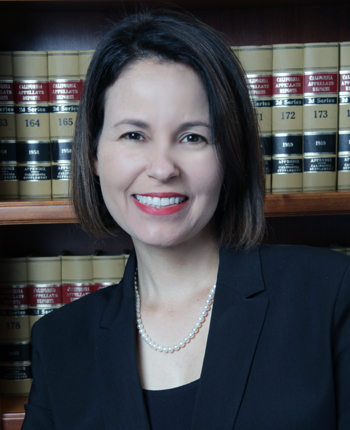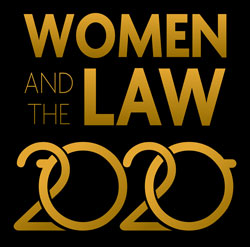How law firms can increase diversity among equity partners

Maria Antonieta Sager.
I often tell the legal students I mentor that I know how lucky I am to be where I am today.
I am a multiethnic female lawyer; my father is Italian and my mother Salvadoran. I also am someone who overcame the challenges associated with immigrating to the United States at age 4 and being raised in poverty, primarily by a single mother who did not know how to read, write or speak English.
I mentor students at Centro Legal de la Raza’s Youth Law Academy, where I serve on their advisory committee in Oakland, California. I share these vulnerabilities to help my mentees see that if I could beat the odds, so can they.
I felt compelled to tell my own story after reading that only 2% of equity law partners at large law firms are women of color, according to ABA Journal’s June 22 article titled “Majority of minority female lawyers consider leaving law; ABA study explains why.” I hope my personal story will help increase this number by offering tools to other women lawyers and inspiring changes to law firm culture.
I am an equity law partner at one of the largest and most respected applicant workers’ compensation law firms in Oakland. Boxer & Gerson, where I have represented injured workers for nearly 20 years.
So how did I end up where I am today? I believe it has to do with a little bit of luck, a lot of hard work, and most important, joining a law firm that treats you exactly as Boxer & Gerson has treated me. From my very first day, they have shown me respect, assigned engaged and meaningful mentors, and created a culture that recognizes my contributions. If more law firms treated their associates and partners as my firm has treated me, that 2% number would undoubtedly increase, as the above study suggests.
My story began in 2003, soon after becoming a lawyer, when I responded to Boxer & Gerson’s ad for a Spanish-speaking workers’ compensation lawyer. That resulted in interviews shortly thereafter with four of the firm’s senior partners. All these years later, I still remember founding partner Stewart Boxer’s comment at the end of the interview that I had his vote.
The firm offered me an associate lawyer position, which I accepted. It was one of the best decisions of my life, right after deciding to become a lawyer—due to my father’s sound advice—and marrying my husband, Larry.
Firm partners Julius Young and John Harrigan were assigned as my mentors. Each had different styles, but they both made me feel supported and helped to shape me into the lawyer I am today.
I met with Julius on a weekly basis for about two years, and without fail, we went over my list of questions in an organized and systematic fashion with the goal of helping me master the nuances of the practice.
After that initial time, Julius and John were always there to answer whatever questions arose, and whenever I entered their offices with a question, each gave me his undivided attention, never embarrassing or berating me for asking the same question more than once.
Their respectfulness toward me was essential to my survival at the firm as a young lawyer, new and insecure, trying my best not to fail. I remember those associate years fondly, knowing Julius, John and the other partners had my back and wanted me to succeed.
During my eight years as an associate, I did exactly what I tell students I mentor to do. I stood by my word and followed through on promises. I built my reputation through kindness and my actions. I also discovered early on that I was a more effective advocate for my clients if I got along with opposing counsel as much as possible.
I avoided unnecessary gossip, instead focusing on representing my clients as best I could. That was not only my ethical obligation, but over the years it would result in a book of business I enjoy to this very day. I also became a California certified legal specialist in workers’ compensation, as this was important to the firm and a good thing for my career.

Illustration by Sara Wadford.
During those years, I never ruminated about when I would make partner, instead trusting the firm and knowing that if I was supposed to be a partner, it would happen.
Sometime during my eighth year as an associate, my mentor John and founding partner Michael Gerson asked me to lunch. During our lunch, it became clear I was being considered for partnership at their firm. I still remember Mike’s comments as we ate, that it was important for our firm to give back to our community—something I heard him say often. I see so clearly that each decision I made related to the firm was based on this advice. I was offered a partnership position, which I proudly accepted.
The ABA Journal article cited that minority female lawyers left law firms because they worked for firms that failed to create cultures that recognized their contributions. That was never my experience at Boxer & Gerson. To the contrary, my contributions were regularly recognized by the partners, which in turn made me feel truly valued. To name a few examples, they attended events related to my volunteer work as well as ceremonies honoring my legal achievements.
They also often sent public heartfelt emails acknowledging my contributions in and outside of the firm, including my community outreach work. The November 2019 email below from John was sent to the partners about my involvement in the annual Oakland Mayor’s Toy Drive.
“First, not for the first time nor the last I suspect, thank you for your hard work on this over the years. Thank you for your incredible organizational skills and follow through. For your inspirational leadership as your colleagues on the Toy Drive never wanted to let you down. Most of all, thank you on behalf of the thousands of Oakland kids who you and your colleagues brought joy to. Finally, thank you for the honor and respect you brought to the firm for your devotion to this project.”
Imagine how I felt after reading that. I’m not sure I would have lasted at the firm, as happy as I’ve been for all these years, had my partners stood in silence after each of my contributions.
Looking back on it all, I never expected the partners at my firm to make any of the above happen. Even as an associate and new partner, I intuitively knew I had to do the lion’s share of cultivating these relationships, and although I did, it was still a true collaboration with the partners.
I debated telling my story, as I worried my advice was too simple. But law firms’ call to action is simple. If firms want to help increase that 2% figure among equity partners, do exactly as my partners have done: Respect your lawyers, assign engaged mentors and create a culture of recognition.
I know how lucky I am to be among the 2%. I will be forever grateful to my firm for creating the best culture and professional experience a person could ask for.
Maria Antonieta Sager, a partner at Boxer & Gerson, is fluent in Spanish and conversational in Italian. She is also the immediate past chair of the workers’ compensation section’s executive committee of the California Lawyers Association, the workers’ compensation section representative of the CLA’s board of representatives, an attorney consultant to the San Francisco Mexican Consulate, and a judge pro tem at the Oakland workers’ compensation appeals board.
ABAJournal.com is accepting queries for original, thoughtful, nonpromotional articles and commentary by unpaid contributors to run in the Your Voice section. Details and submission guidelines are posted at “Your Submissions, Your Voice.”
Your Voice submissions

The ABA Journal wants to host and facilitate conversations among lawyers about their profession. We are now accepting thoughtful, non-promotional articles and commentary by unpaid contributors.

